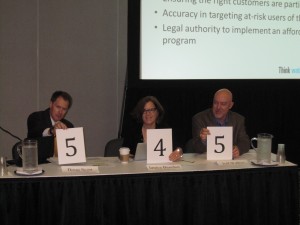Mary Tiger is the Chief Operating Officer for the Environmental Finance Center and Project Manager for “Defining a Resilient Business Model for Water Utilities” Project funded bythe Water Research Foundation.
Water and wastewater utilities most commonly generate revenue by charging rates against a customer’s water use. When setting these rates, a utility balances multiple and, oftentimes, conflicting, objectives. With their rate structures, most utilities strive to collect adequate revenues for operations and system investment, promote the efficient use of water by its customers, and maintain affordability for basic levels of consumption. In particular, the goals of revenue sufficiency and conservation promotion present utilities with a conundrum[1]: when customers are more efficient with their water use or conserve, a utility’s sales base erodes. The Environmental Finance Center is researching alternatives to the classic water utility retail pricing; alternatives that would better align utility revenue stability and the promotion of efficient water use.
Continue reading
 Guest author Susan Ancel is the Director of Water Distribution and Transmission with EPCOR Water Services Inc.
Guest author Susan Ancel is the Director of Water Distribution and Transmission with EPCOR Water Services Inc.

